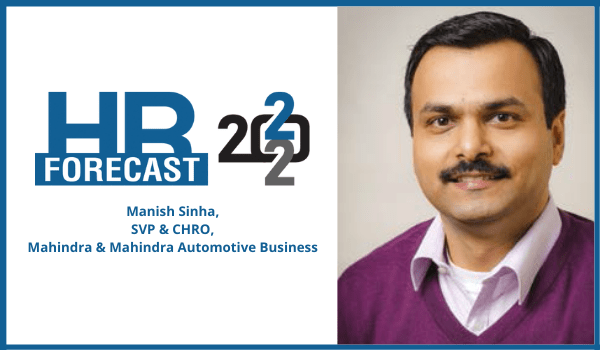A big change in 2022
In the eyes of employees and managers alike, the physical workplace has psychologically shifted to a phygital space. To manage the global attrition deluge, corporates will facilitate disproportionate avenues of ‘flexibility’.
Everything else staying the same, employees are likely to gravitate towards organisations providing ‘work from anywhere’ option. Organisations vociferously advocating flexibility of location shall continue to attract talent. Multiple functional domains — digital, tech, engineering, commercial, HR, finance, marketing, communication, legal — will largely migrate to WFA or hybrid work norms. This will have a ripple effect on workplace culture, collaboration tools, DE&I initiatives, mental health and wellbeing drives and so on.
Leaders’ ability and effectiveness to lead virtually, shall be put to test. Going forward, this will be a critical skill that will need to be developed. Engaging and connecting with a virtual audience to sense burnout will pay huge dividends. Organisations will also have to draw up guidelines to regulate work hours in a virtual setup. Blurred discipline around workhours will disincentivise Gen Z and women.
Broader strategy to boost DE&I in 2022
A broader strategy to boost DE&I efforts has to be based on a compelling business proposition as well as the purpose of the organisation. Diversity, equality and inclusion initiatives will continue to be a ‘nice to do’ metric till it starts impacting business results. When organisations start winning or losing business/ customers based on DE&I results, the true impact of the initiatives will be felt.
As a strategy, DE&I needs to be integrated with business scorecard. Otherwise, it will continue to be on the fringes. Leaders need to understand and explain the rationale behind driving DE&I in the organisation. It must be understood at a deeper level than basic awareness.
In today’s environment, any buying decision is not limited to a particular gender. Inclusivity of generations is a given. Therefore, building DE&I in all aspects of business makes so much sense. It must be included as part of the talent attraction, retention, and development strategy of an organisation. Visible demonstrations of intent — making concerted efforts towards building required physical infrastructure at work, removing unconscious biases, celebrating DE&I change champions, recognising unrepresented groups, creating sponsorship around it, implementing policy-level changes — shall yield results sooner than later.
“Leaders’ ability and effectiveness to lead virtually, shall be put to test”
Working for money to working for a purpose
More than ever before, employees across generations are likely to prefer organisations that connect their purpose to their core values. The purpose, therefore, gets reflected in their product offerings, ways of doing business, leadership philosophy, talent strategies and so on. Employees are more likely to be motivated by the bigger cause and the impact their role creates in achieving the
purpose. Having said that, it is unlikely that the scale will tilt completely.
Choosing to work for an organisation with purpose, at the cost of money, may not happen always. However, the discretionary effort is likely to go up multiple times if the employee’s personal values and vision are aligned with the purpose of the organisation.
Businesses impacting any environmental or social cause are more likely to have employees as brand advocates possessing a higher sense of commitment, loyalty, and engagement. Besides meaningful work and growth opportunities, employees find a sense of fulfilment through the purpose at work and purpose of the organisation. Employees today are more aware of their organisational stand on some of the critical ESG related issues. What the organisation practices is of higher relevance than what it talks about.
Higher the congruence between what they preach and practise, better the chances of employees changing their mindset to work for a purpose-driven organisation.
Learning be driven by social, technology or content
Learning will absolutely be driven by a mix of social, tech and content. It has already moved into a beautiful mix of ILT, VILT, digital micro learning, self-led on-demand learning, and organisation mandated learning. The multitude of learning platforms enabled by technology will help curate content in an engaging way.
The organisational LMS (Learning Management system) will play a critical role to ensure pull towards the learning intervention. Content-based learning available on Twitter, LinkedIn, Harvard Spark, Coursera, Udemy and other MOOCs will help learners choose from the plethora of options. Learning will be in the flow of work and will be learner led. Each learner will have the choice of learning medium, platform and content.
“DE&I will remain on the fringes unless integrated with business scorecard”
Personalised learning pathways aided by Artificial Intelligence/ Machine Learning will encourage employees to invest in their learning. Individual learning budget will become more prominent and the choice to utilise the same will be left to the employee. Organisations will reward employees who invest in their self-learning via growth assignments and higher level of responsibilities.
AI to change and impact HR post digital transformation
Artificial intelligence and machine learning will be the harbingers of change in all people processes, and will facilitate wider people-related decisions. From a traditional recruitment process to an AI-enabled sourcing, screening, and interviewing process, it’s a journey many organisations have covered. The speed and accuracy of shortlisting goes up multiple times, subjectivity gets reduced and finding the right talent with the right skillset at the right time goes up. It works for employees very well. It highlights the right roles for them and broadly predicts their performance and expected tenure as well. Based on algorithms and previous track record, it can also predict whether an employee is likely to accept or reject the offer.
On the onboarding front, an AI-enabled onboarding tool ensures a smooth onboarding experience with reduced time to being fully productive. Many organisations have implemented AI based tools for driving learning and talent-management initiatives. It can suggest courses / learning interventions based on the growth gaps for the same or the next-level role. Polite learning nudges and encouraging employees to go for well-curated personalised learning pathways are other benefits. It can also highlight employees falling in the ‘flight risk’ category. Accordingly, a succession pipeline based on the best fit to the role can be a big benefit of AI in HR.
With the balanced approach of human and artificial intelligence in HR, overall employee experience will clearly see a shift. Organisations need to find a sweet spot to make it work for better decision making and higher productivity, without losing the ‘human’ in human resources.
Value our content... contribute towards our growth. Even a small contribution a month would be of great help for us.
Since eight years, we have been serving the industry through daily news and stories. Our content is free for all and we plan to keep it that way.
Support HRKatha. Pay Here (All it takes is a minute)




































